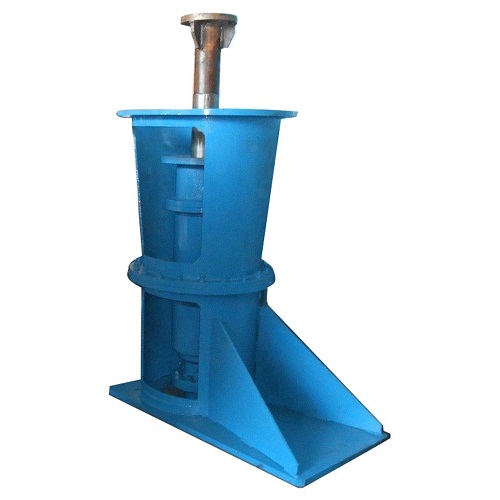
Our Product
AGGITATOR
Agitators: Essential Equipment for Mixing and Blending
Introduction
An agitator is a mechanical device used to mix, stir, or blend substances together. Agitators are found in various industries such as chemical, pharmaceutical, food processing, water treatment, and even in laboratories. The purpose of an agitator is to improve the consistency of a mixture by promoting the interaction of the components, which may include liquids, solids, or gases. The type and design of the agitator are selected based on the specific application, the characteristics of the materials to be mixed, and the desired outcome.
How Do Agitators Work?
Agitators work by creating motion within a container, usually a tank or vessel, to blend or mix materials. They are typically powered by an electric motor, which drives a shaft that rotates blades or impellers inside the container. The motion of the blades creates a swirling, turbulent flow that induces mixing, helping substances combine or achieve a homogeneous mixture.
Types of Agitators:
-
Top-Mounted Agitators: These are the most common type of agitator, where the motor and shaft are mounted on the top of the tank. They are used for large tanks and are available in different designs, such as direct-drive, belt-drive, or geared systems.
-
Side-Mounted Agitators: In these systems, the motor and shaft are mounted on the side of the tank, typically used in medium-sized containers. Side-mounted agitators provide effective mixing while minimizing space usage.
-
Bottom-Mounted Agitators: For specific applications, agitators may be mounted at the bottom of a vessel. These are usually used when dealing with dense liquids or slurry mixtures.
-
Magnetic Agitators: Often used in laboratory settings or small-scale processes, magnetic agitators rely on magnetic fields to drive the agitation without the need for direct mechanical contact. This ensures contamination-free mixing, especially when working with sensitive materials.
Applications of Agitators
Agitators are essential in numerous industries, where they are used to perform various types of mixing tasks:
-
Chemical Industry: In chemical processing, agitators ensure that chemicals are blended effectively to create solutions, emulsions, suspensions, or reactions. They are essential in processes like polymerization, fermentation, or neutralization.
-
Pharmaceutical Industry: Agitators are used in pharmaceutical manufacturing to mix ingredients in the production of drugs, syrups, ointments, and creams. Ensuring proper blending is vital for maintaining the consistency and effectiveness of medications.
-
Food and Beverage Industry: In food processing, agitators are used to mix ingredients, emulsify liquids, and even create foams in products such as sauces, ice cream, beverages, and dough. The agitator's design must prevent product damage and ensure that food safety standards are met.
-
Water Treatment: Agitators in water treatment plants help mix chemicals like chlorine or coagulants with water to ensure proper treatment. They also help with the mixing of sludge in wastewater treatment processes.
-
Oil and Gas Industry: In the oil and gas industry, agitators are used to mix drilling fluids and cement slurries, ensuring uniform consistency for efficient drilling and well operations.
-
Cosmetics Industry: Agitators are used in cosmetic formulations, such as lotions, shampoos, and makeup, to blend ingredients and achieve the correct texture, consistency, and appearance.
Types of Agitation Mechanisms
Different types of mixing mechanisms are used in agitators, depending on the physical properties of the materials to be mixed:
-
Rotational Agitation: The most common form of agitation, where the impeller rotates, creating shear forces that help blend materials. This method is ideal for liquids and slurries.
-
Reciprocating Agitation: This type of agitation involves a back-and-forth motion, which is ideal for suspending solids or mixing high-viscosity materials.
-
Radial Agitation: Radial agitators move fluid outward from the center, providing high shear and turbulence, making them ideal for mixing small particles or creating emulsions.
-
Axial Agitation: In axial agitation, the impeller moves the liquid up and down along the axis of the tank. This type is often used for mixing large quantities of liquid.
Factors to Consider When Selecting an Agitator
Choosing the right agitator depends on several factors, including:
-
Viscosity of the Fluid: Higher viscosity fluids require more power and specialized agitators, such as anchor or paddle agitators, which can handle thicker materials.
-
Type of Mixing: Consider whether you need simple mixing, high shear mixing, or blending of immiscible fluids (e.g., oil and water). Different impeller designs (e.g., propellers, turbines, or dissolvers) are better suited for specific tasks.
-
Tank Shape and Size: The geometry of the tank influences the type of agitator that will be most effective. For example, conical tanks may require specialized agitators to ensure uniform mixing.
-
Shear Sensitivity: If the materials being mixed are sensitive to shear forces (e.g., fragile proteins or enzymes), it’s important to select an agitator that minimizes shear and gently mixes the ingredients.
-
Power Requirements: The power of the motor should be sufficient to handle the volume and viscosity of the materials being mixed. Too little power may result in poor mixing, while too much power could lead to excessive agitation or damage to delicate components.
Advantages of Using Agitators
-
Improved Process Efficiency: Agitators help achieve consistent blending, enhancing the quality of the final product and improving the overall process efficiency.
-
Time-Saving: By promoting faster mixing, agitators can reduce process times, making production more efficient and cost-effective.
-
Versatility: Agitators can handle a wide range of materials, from thin liquids to thick slurries, and can be adapted to meet the specific needs of various industries.
-
Cost-Effectiveness: By preventing product inconsistencies and improving the efficiency of mixing, agitators help reduce waste and energy consumption, making them a cost-effective investment for industries.
Conclusion
Agitators are essential equipment in industries that require efficient mixing and blending. From improving chemical reactions to creating consistent food products, these devices ensure that materials are combined effectively to achieve the desired results. By selecting the appropriate agitator type, design, and mixing mechanism, businesses can optimize their production processes, improve product quality, and meet regulatory standards.

